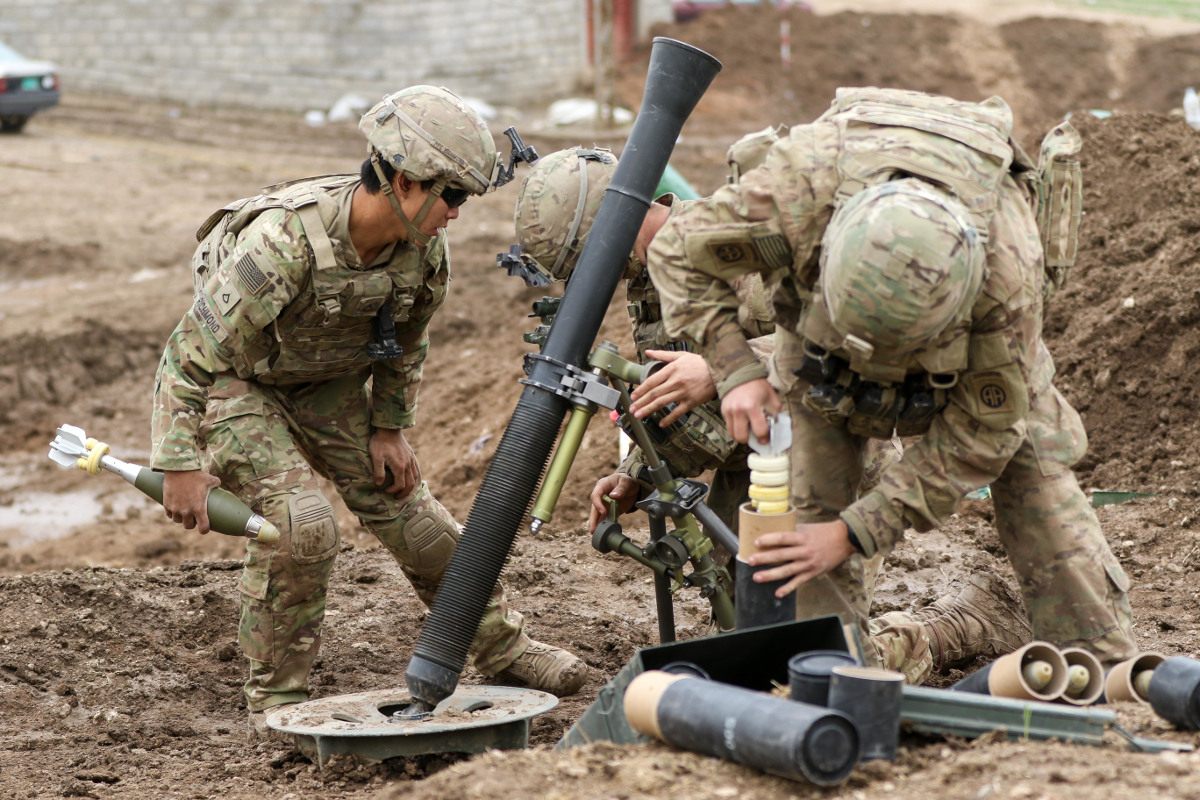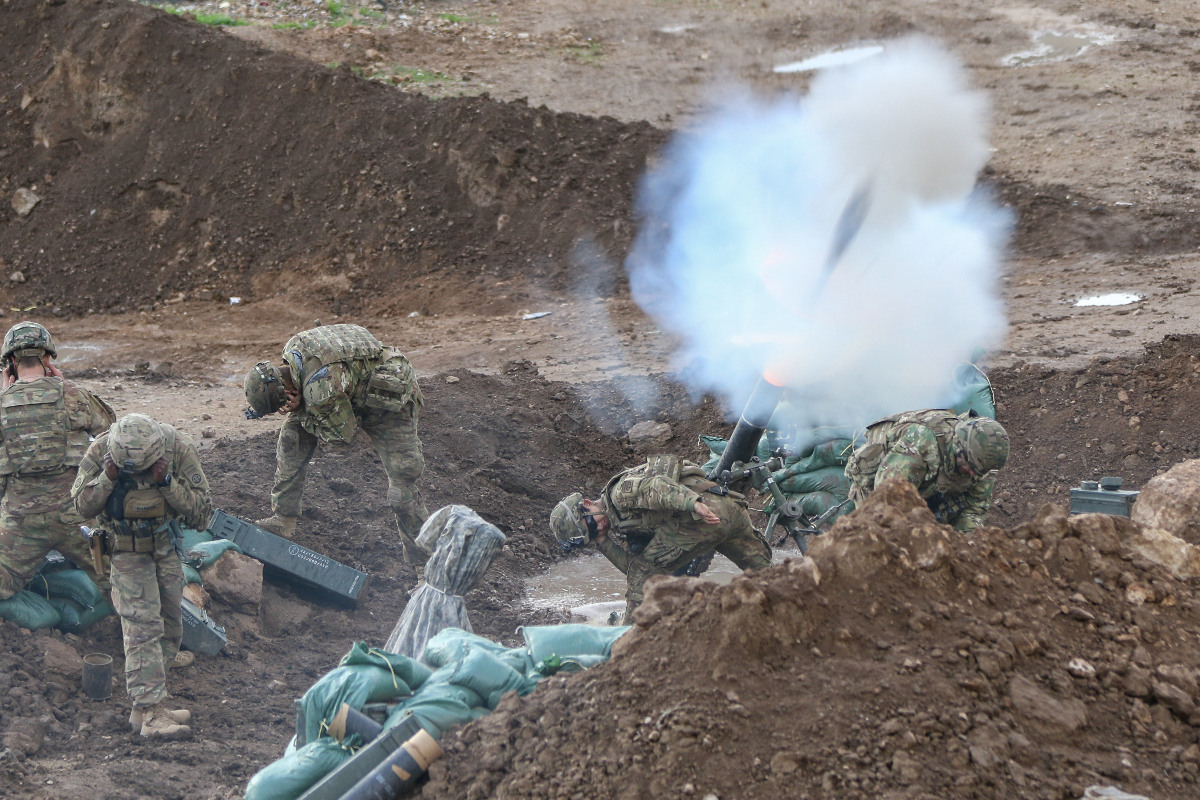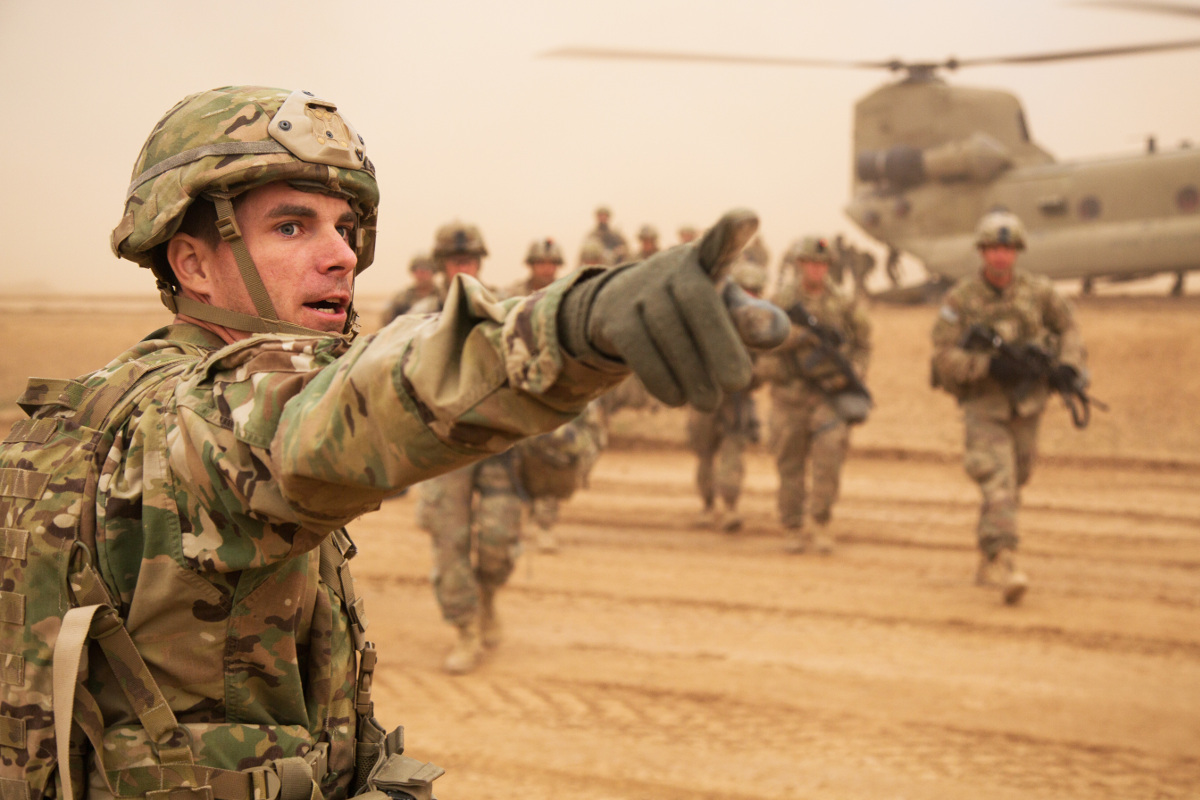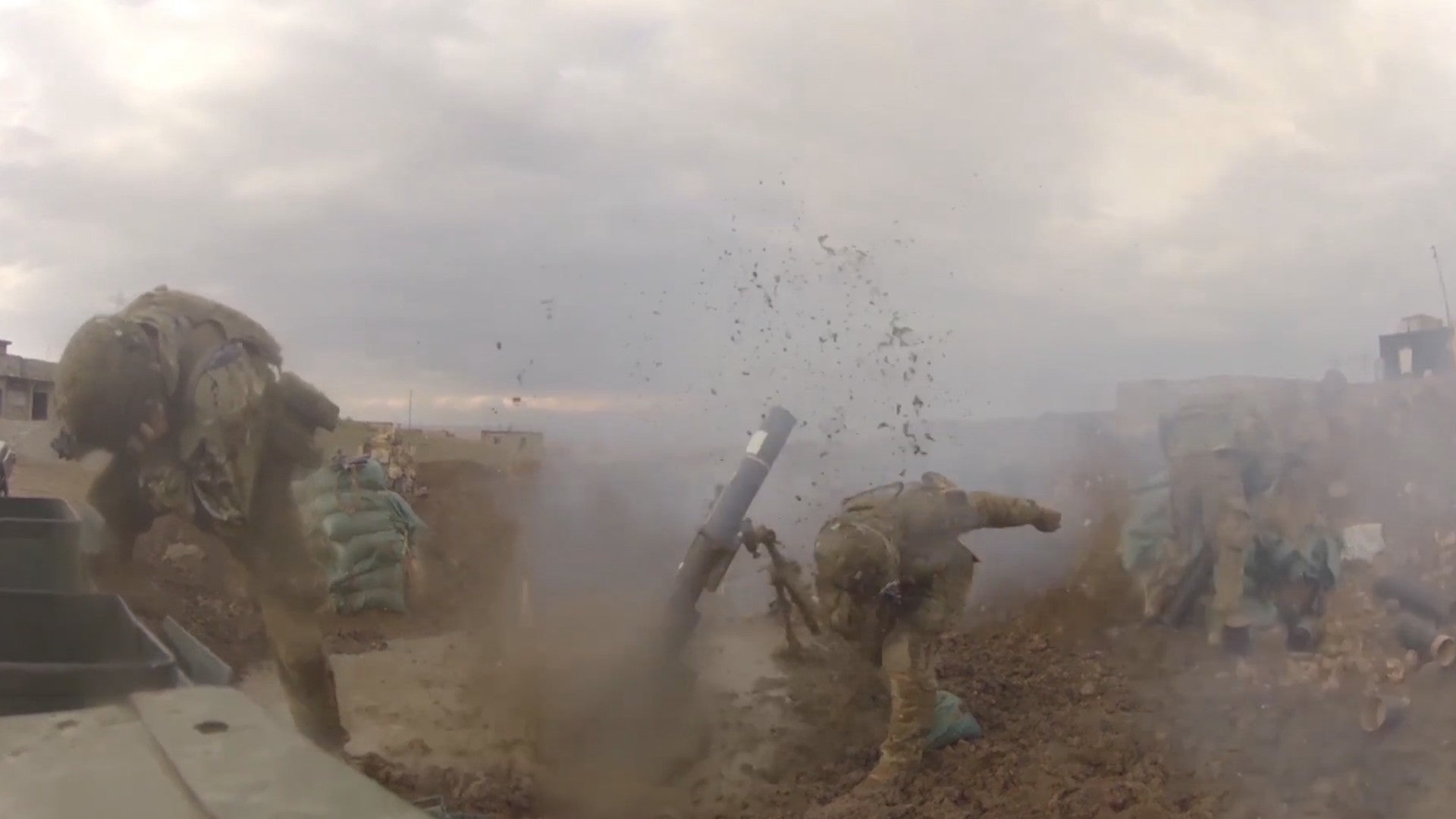Since the U.S. military began its campaign against ISIS in Iraq and Syria, American troops, primarily special operators, have been creeping closer to the front lines and toward increasingly active combat. A new, official video provides measurable clues about just how close conventional forces now are to enemy in the fight to finally eject the terrorists from their de facto capital in Iraq, Mosul.
On May 19, 2017, the U.S. Army’s 2nd Brigade Combat Team, 82nd Airborne Division published another in a set of videos of its soldiers supporting Iraqi security forces (ISF) in and around Mosul. Unlike the other footage – which showed paratroopers flying in to a helicopter landing zone on UH-60 Black Hawks, driving and walking through liberated streets inside the city, delivering ammunition, and training Iraqi police snipers – this particular clip followed a mortar section providing relatively close-range fire support. Other images show the mortars in action in or near Mosul as early as March, 14, 2017.
The brigade “enables their ISF partners through the advise and assist mission, contributing planning, intelligence collection and analysis, force protection, and precision fires to achieve the military defeat of ISIS,” the official caption states. “Precision” in this case would be relative to the gunner’s skill, as no guided mortar rounds, though they exist, are visible. It is also not clear whether the troops have GPS-assisted targeting equipment or electronic ballistic computers. They appear to do the initial sighting-in and adjustments manually.
The team from the 82nd Airborne fires or prepared to fire both the 81mm M252 and the 120mm M120 mortars in the video. The M252 has a maximum range of almost three and a half miles, but can also hit targets less than 300 feet away. The significantly larger M120 can toss shells nearly four and half miles away while still able to hit the enemy at ranges just over 650 feet.

However, these ranges are entirely dependent on what type of ammunition the troops are firing, how many propelling charges they’re using, and the angle at which they position the weapon. Though we don’t know the exact inclination of the M120 when the soldiers shoot it in the video, we can see that they’re using M934 or M934A1 high-explosive rounds and stripping off all but one charge from the shell before sending it on its way.
Both the M934 and the improved M934A1 weigh just over 31 pounds and are nearly 28 inches long. The M929 smoke round – which we have found more detailed firing table information for – is identical in weight and less than two tenths of an inch shorter due to the different nose fuze. With only one charge, the maximum range of the M929 drops to just over one and a half miles.

What this means is that, most likely, these soldiers from the 82nd Airborne were within that range of their enemy. The top American command leading the coalition campaign against ISIS, Combined Joint Task Force-Operation Inherent Resolve (CJTF-OIR), appeared to confirm the close-in and less precise nature of the mortars. “CJTF-OIR considers mortars an area weapons system used for protection of Coalition forces and for suppression of enemy forces,” the task force’s media office told The War Zone in an Email.
While the U.S. military has employed artillery in support of Iraqi and Kurdish forces fighting ISIS before, it had done so at appreciable distances thanks to 155mm howitzers and 227mm rocket artillery systems. Both of these weapons have the ability to attack targets with GPS-guided rounds dozens of miles away.

In the past, in what some might see as a tacit acknowledgement of the frequency of these fire missions, CJTF-OIR noted it did not count artillery support for Iraqi “maneuver” operations as a “strike” and therefore does not track how often it occurs or how much ammunition American forces have expended in this role. It has since removed this caveat from the daily press releases cataloging air and artillery attacks against ISIS. But the same disclaimer still applies to the 82nd’s mortar teams. “The Coalition does not have statistics on mortar rounds fired, how often used, or other details,” the command’s media officer wrote.
This only continues to highlight the obtuse nature of the American advisory mission in Iraq and Syria, as well as how the Pentagon defines combat, which I have covered extensively in the past. The issue is particularly important in light of President Donald Trump and his administration’s increasing willingness to send both special operators and
conventional troops on risky missions throughout the Middle East and beyond.

At the end of March 2017, we at The War Zone looked closely at how this policy shift had already begun to change the face of American involvement in the Mosul offensive specifically. This became even more apparent when a roadside bomb killed one of the 82nd’s paratroopers, 1st Lieutenant Weston Lee, near Mosul on April 29, 2017. Lee was the first U.S. military to die in Iraq after Trump’s inauguration. According to the Pentagon, the officer was pulling security while on an advise and assist mission at the time. However, the official press release noted that the “incident is under investigation,” suggesting the exact nature of events might not have been immediately clear.
What is obvious is that regular American personnel, in addition to special operations forces, are inching closer to the actual fighting, and therefore increasing danger, in Mosul. As of May 2017, Iraqi forces were in the midst of their final push to oust ISIS from the city completely.

The last battles are going to be “extremely violent” for Iraqi troops, Army Colonel Patrick Work, head of the 82nd’s Airborne’s 2nd Brigade Combat Team, told The Washington Post in May 2017. “The hardest days are still in front of them.”
From what we can tell, a number of the brigade’s soldiers will be very close to this intense battle, actively providing fire support to uproot the last remaining terrorists.
Contact the author: joe@thedrive.com
